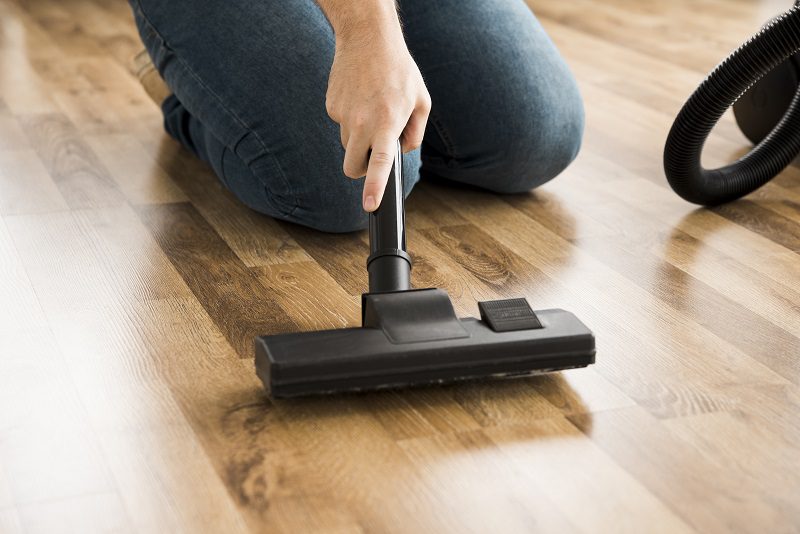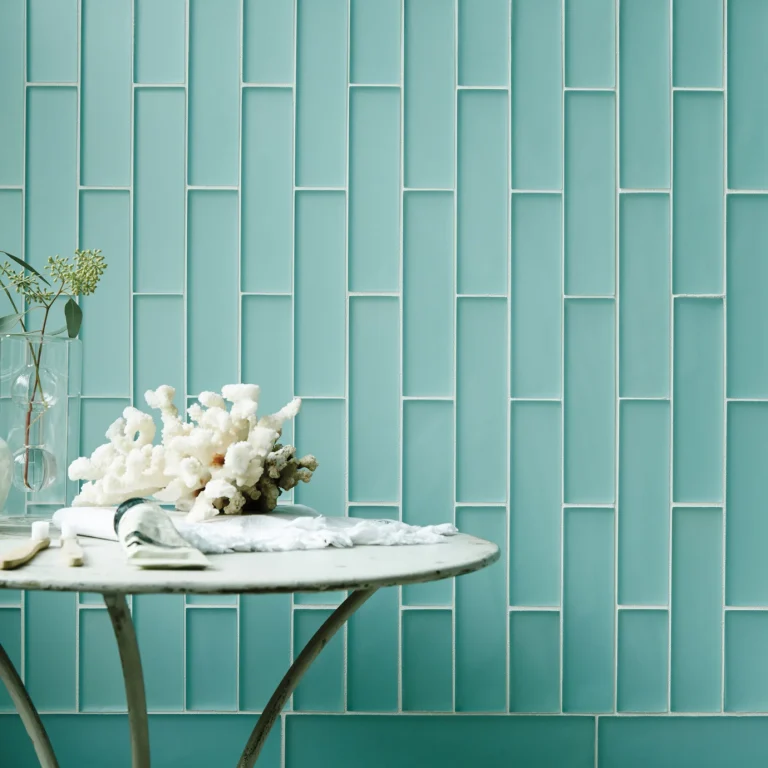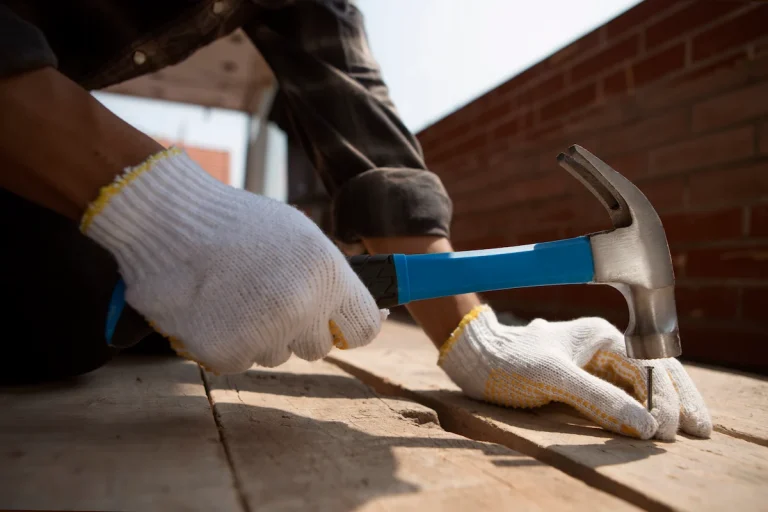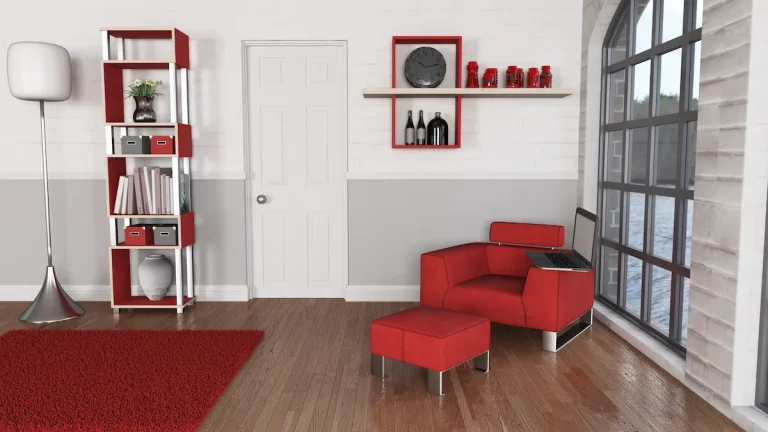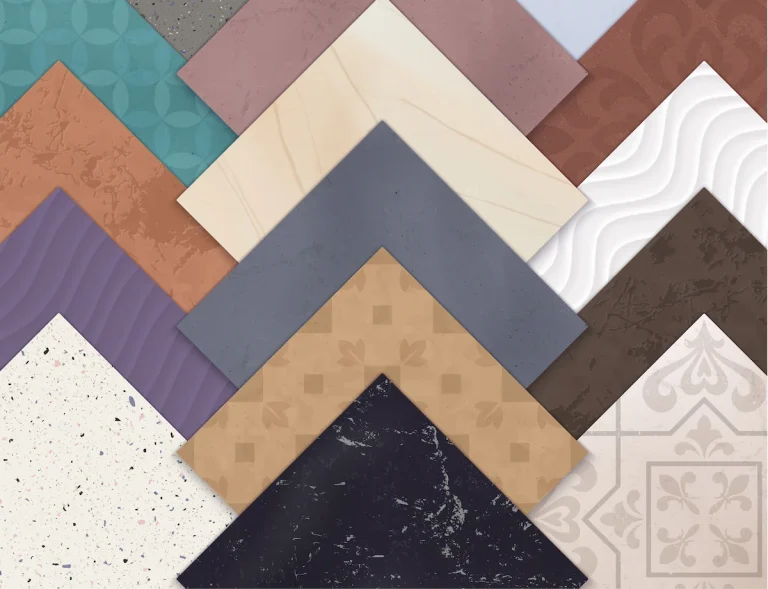Vinyl flooring has emerged as a favoured option for homeowners who desire a combination of durability and stylish design at an economical price point. This article examines the nature of vinyl flooring care, including the available types of vinyl flooring that you can choose.
By establishing a consistent cleaning routine and steering clear of common maintenance errors, readers will acquire comprehensive knowledge necessary to maintain vinyl floors. With a few straightforward practices, one can fully appreciate the beauty and functionality of vinyl flooring within their residence, keeping floors hygienic and easy to clean.
Types of Vinyl Flooring
Vinyl flooring comes in various types, including luxury vinyl planks (LVP), luxury vinyl tiles (LVT), and sheet vinyl. Each option offers durability, water resistance, and a range of styles to suit different spaces and preferences.
a. Luxury Vinyl Plank (LVP)
Resembles hardwood with realistic textures and is highly durable. Available in waterproof and rigid core options.
See product: Luvanto Premium Click Plus Oyster Marble
b. Luxury Vinyl Tile (LVT)
Mimics stone or ceramic tile but is softer underfoot and easier to install.
c. Sheet Vinyl
Comes in large rolls, minimizing seams and providing a budget-friendly, water-resistant option.
d. Vinyl Composition Tile (VCT)
Made from vinyl chips, requiring periodic waxing but offering high durability for commercial spaces.
e. Rigid Core Vinyl (SPC/WPC)
- SPC (Stone Plastic Composite) – Highly durable, waterproof, and dent-resistant, great for high-traffic areas.
- WPC (Wood Plastic Composite) – Softer and more comfortable underfoot, ideal for residential use.
The Do’S for Vinyl Flooring Care
Proper vinyl flooring care is crucial to preserving its appearance and longevity, ensuring that the floors remain hygienic and visually appealing over the years.
1. Regular Cleaning Routine
Establishing a regular cleaning routine for vinyl flooring is essential for its maintenance and longevity. A consistent schedule of weekly or fortnightly cleaning can significantly reduce dirt accumulation while ensuring the floors remain hygienic. It is advisable to utilise a vacuum cleaner or a broom for daily removal of dirt, followed by mopping with a damp cloth and mild detergents to achieve a comprehensive clean. For spot cleaning, a soft cloth and warm water should be employed to address stubborn stains, thereby preserving the integrity of the flooring.
To effectively implement this cleaning routine, consider the following recommendations:
- Frequency: Aim for daily sweeping and weekly mopping to maintain the optimal appearance of your floors.
- Recommended Tools: Invest in a high-quality vacuum cleaner that is safe for vinyl, a microfibre mop, and gentle cleaning solutions specifically designed for vinyl flooring.
- Techniques: When mopping, ensure to wring out excess water to prevent potential damage to the flooring.
Encouraging all household members to adhere to this cleaning schedule will promote collective responsibility in maintaining a clean and welcoming environment. Over time, this routine will not only preserve the aesthetic appeal of the flooring but also enhance its durability.
2. Use the Right Cleaning Products
Utilising the appropriate cleaning products is essential for preserving the quality and appearance of vinyl flooring. It is advisable to select mild detergents and pH-neutral cleaners specifically formulated for vinyl surfaces, as harsh chemicals can compromise the protective wear layer. Always review product labels to confirm that the cleaning agents are non-abrasive and suitable for use on vinyl flooring. Additionally, it is important to avoid rubber-based cleaning products, as these can cause discolouration and deterioration over time.
Maintaining vinyl flooring in optimal condition necessitates careful consideration of the types of cleaning agents employed. It is crucial to choose products that are effective yet gentle enough to avoid damaging the surface.
The following are recommendations for suitable cleaning products:
- Mild washing-up liquid mixed with water
- pH-neutral cleaners specifically designed for vinyl
- Commercial vinyl floor cleaners that provide high dimensional stability
Conversely, certain products should be strictly avoided to preserve the integrity of the flooring:
- Strong solvents, including ammonia and bleach
- Wax-based products that may accumulate over time
- Abrasive scrubbing pads
Employing appropriate cleaning solutions ensures the longevity and aesthetic appeal of the flooring, enhancing both its functionality and overall enjoyment.
3. Avoid Harsh Chemicals
To maintain the integrity of vinyl flooring, it is essential to avoid the use of harsh chemicals and cleaning methods that can cause irreversible damage.
When determining the appropriate cleaning approach for vinyl, it is crucial to identify the types of cleaning solutions that may adversely affect this specific flooring. Common cleaners that contain bleach, a potent disinfectant, can lead to discolouration and compromise the surface over time. Similarly, ammonia-based products are harmful, as they can deteriorate the vinyl and create conditions conducive to future staining.
- Rubber cleaners are also detrimental, as they may leave behind residue that attracts dirt.
- The use of abrasive scrubbers can scratch the surface, thereby diminishing its shine and lustre.
Rather than resorting to these harsh chemicals, it is advisable to use a mixture of warm water and mild washing-up liquid for effective cleaning. For persistent stains, a solution of vinegar and water can be beneficial without jeopardising the material’s integrity. Always utilise a soft cloth to prevent scratches, and regularly schedule a light mopping with appropriate cleaners to preserve the beauty of vinyl flooring.
4. Protect from Scratches and Dents
Protecting vinyl flooring from scratches and dents is essential for maintaining its pristine appearance and functionality. Implementing proactive measures can significantly extend the lifespan of the flooring and enhance its overall aesthetic appeal.
One effective approach is to utilize protective pads under furniture legs to prevent indentations caused by heavy items. It is advisable to avoid dragging furniture or appliances across the floor; instead, lifting them during movement is recommended. Additionally, regularly deep cleaning with a soft cloth and neutral detergent can assist in identifying and addressing any potential damage before it escalates.
Homeowners should also consider the following protective measures to further safeguard their vinyl flooring:
- Furniture Placement: Thoughtful arrangement of furniture can reduce the risk of accidental abrasions. It is advisable to avoid placing heavy objects in high-traffic areas and to ensure that furniture is evenly spaced.
- Using Rugs: Strategically placing area rugs, particularly near entryways, can trap dirt and moisture, preventing them from being tracked onto the vinyl flooring.
- Routine Inspections: Conducting regular inspections of the flooring aids in the prompt identification of scratches or signs of wear. Early detection facilitates timely repairs, thereby preventing more significant issues from developing.
5. Prevent Water Damage
Preventing water damage is essential for the longevity of vinyl flooring, as excessive moisture can lead to warping and other structural concerns. It is imperative to ensure that any spills are promptly addressed using an absorbent cloth and to avoid allowing standing water to accumulate on the surface. Employ cleaning methods that utilise minimal water and a gentle cleaning solution, and consistently maintain dry conditions to prevent damage. Regular inspections for signs of water intrusion should be conducted, particularly in areas prone to high moisture, such as kitchens and bathrooms.
To enhance the effectiveness of these preventive measures, the following recommendations should be considered:
- Implement a routine cleaning schedule that employs a damp mop rather than a soaking wet one to help manage moisture levels effectively, and always keep floors dry.
- Install mats or rugs at entrance points to capture dirt and water, thereby preventing excessive moisture accumulation on the primary flooring. Use doormats to further enhance this protective measure.
- Ensure adequate ventilation in rooms, especially bathrooms and kitchens, by utilising fans or opening windows to lower humidity levels. Employing proper cleaning solutions and regularly checking cleaning protocols can also contribute to maintaining a healthy environment.
The significance of regular floor inspections cannot be overstated; thorough checks can assist in identifying early signs of water damage and addressing them before they develop into significant issues. Furthermore, regular assessments promote a proactive approach to maintaining both the aesthetic and functional integrity of the flooring. Consulting flooring experts can provide insights into more durable and effective maintenance strategies.
6. Handle Stains Immediately
Promptly addressing stains is essential for maintaining the aesthetic appeal and hygiene of vinyl flooring. Regular broom vacuuming and using household cleaners safely can further enhance cleanliness. For spot cleaning, it is recommended to use an absorbent cloth to gently blot the stain, avoiding any scrubbing that could potentially damage the surface. Using a floor care kit designed for vinyl flooring can help remove stains effectively. Depending on the nature of the stain, a suitable cleaning solution that is safe for vinyl flooring should be applied, ensuring adherence to the manufacturer’s instructions for optimal results. Brands like Quick-Step and Karndean offer reliable products for these purposes.
Regular inspections for stains can significantly contribute to preserving the overall appearance of the flooring.
Stains can originate from various sources, including food spills, pet accidents, or dirt tracked in from outside. Employing appropriate cleaning techniques is crucial for prolonging the longevity and beauty of the flooring. Using gentle, neutral cleaning agents can also help preserve the material.
Here are specific strategies for addressing different types of stains:
- Food Stains: Combine a few drops of washing-up liquid with water and use a cloth to gently blot the affected area.
- Ink Stains: Apply surgical spirit to the stain using a cotton ball, taking care to avoid excess moisture.
- Oil and Grease: Cornflour can effectively absorb these stains; sprinkle it on the affected area, allow it to sit for 15 minutes, and then vacuum.
- Pet Urine: A solution of white vinegar and water can be used to neutralise odours and clean the spot.
Taking swift action not only minimises damage but also simplifies the cleaning process, ensuring that your vinyl flooring remains fresh and inviting.
7. Trim Pet Nails
Trimming pets’ nails regularly is a crucial aspect of vinyl flooring care, as excessively long nails can easily scratch and damage the surface. Flooring experts recommend maintaining pets’ nails at a manageable length to prevent unsightly marks on the flooring. Additionally, providing designated play areas can help minimise wear and tear on vinyl surfaces while ensuring the comfort and safety of pets.
Pet care extends beyond mere nail trimming; it involves a comprehensive approach to ensure the well-being of both your flooring and your furry companions. Regular grooming not only enhances the appearance of pets but also aids in shedding control, thereby reducing fur build-up that can be abrasive on surfaces. This practice aligns with the Quick-Step clean approach to maintaining a pristine home.
Here are some essential tips for pet owners:
- Establish a regular grooming routine: Consistently brush your pets to limit shedding and maintain cleanliness.
- Provide comfortable resting spots: Utilise easily cleaned pet beds positioned away from high-traffic areas to mitigate potential dirt and residue.
- Maintain a consistent cleaning schedule: Regularly sweep or vacuum floors to remove fur or debris that may cause scratches.
- Consider using area rugs: Placing area rugs in strategic locations can provide additional protection while enhancing comfort for pets.
By implementing these practices, pet owners can ensure the longevity of their vinyl flooring while fostering a safe and enjoyable environment for their cherished companions.
8. Avoid High Heels
Avoiding high heels on vinyl flooring is essential for safeguarding its surface against scratches and dents. Consider investing in Starfloor Click Solid by Tarkett for a more durable flooring option. The concentrated pressure exerted by high-heeled shoes can result in permanent indentations, adversely affecting the appearance of the flooring over time. Instead, it is advisable to opt for flat or cushioned footwear to help maintain the integrity of the vinyl and ensure its longevity. Brands like Quick-Step and Karndean offer innovative solutions to enhance floor durability.
When selecting appropriate footwear, it is important to acknowledge that not all shoes are equally suitable. High heels can disrupt weight distribution, leading to unsightly marks and damage to the floor’s surface. Shoes with polyurethane soles can provide better weight balance and protection.
To mitigate potential damage, consider the following recommendations:
- Invest in shoes with a rounded or wider toe box.
- Choose options with rubber soles, as they provide superior traction and reduce the risk of slipping.
- Avoid wearing stilettos or shoes with hard soles indoors whenever possible.
Implementing these measures not only protects your flooring but also contributes to overall maintenance. In case of severe damage, it might be necessary to replace plank sections of the flooring. Selecting suitable footwear can enhance the aesthetic appeal of your home while ensuring that the vinyl remains durable for years to come.
9. Move Furniture with Care
Moving furniture with care is imperative for preventing damage to vinyl flooring. It is advisable to lift heavy items instead of dragging them, as dragging can result in scratches and dents that may be irreparable. Additionally, using protective pads under furniture provides an extra layer of defence against potential harm, thereby ensuring that the floors remain in pristine condition. Pads made from foam or felt are particularly effective in preventing scratches.
When shifting heavy pieces, it is crucial to maintain correct posture to avoid injury. Adopting safe moving techniques aligns with Tarkett Human-Conscious Design principles. The following essential tips should be considered:
- Plan Your Path: Before initiating the move, clear the area of any obstacles to ensure a safe passage.
- Use the Right Equipment: Use dollies or hand trucks for larger items to minimise strain on the body.
- Engage Helpers: Do not hesitate to seek assistance. Having an additional pair of hands can significantly facilitate the moving process.
- Check Furniture Feet: Ensure that any legs or bases are equipped with protective pads, which will minimise direct contact with the floor.
By adhering to these precautions, not only will the furniture be moved seamlessly, but the longevity of the flooring will also be assured.
The Don’ts for Vinyl Flooring Care
Avoid using harsh chemicals, abrasive scrubbers, or excessive water when cleaning vinyl flooring. Never drag heavy furniture without protection, and steer clear of steam mops, as high heat can damage the surface..
1. Steam Cleaning
While steam cleaning can be effective for many surfaces, it should be avoided on vinyl flooring to prevent damage.
The use of steam cleaners on vinyl flooring is not advisable, as the high temperatures and moisture can result in considerable water damage over time. Additionally, products like Starfloor Click Solid and Karndean emphasize the importance of using appropriate cleaning methods.
Steam can infiltrate seams and corners, leading to warping and a loss of structural integrity in the flooring. Instead, it is recommended to utilise damp mopping or gentle cleaning methods with appropriate agents to maintain vinyl floors while minimising the risk of damage.
The intense heat generated by steam cleaning can soften the vinyl material, which may result in permanent indentations that detract from the floor’s appearance. Additionally, repeated exposure to steam can weaken adhesive bonds, making the flooring susceptible to lifting. For these reasons, homeowners should exercise caution and consider safer alternatives to preserve the aesthetic appeal and durability of their vinyl surfaces.
To maintain your vinyl flooring effectively, consider the following practices, inspired by Tarkett Human-Conscious Design:
- Use a soft broom or vacuum to eliminate loose dirt and debris, ensuring a durable stylish look.
- For deeper cleaning, mix a small amount of a gentle vinyl floor cleaner with warm water.
- Employ a damp mop, ensuring it is well-wrung to avoid excess moisture that could penetrate the seams.
By adhering to these recommended practices, homeowners can ensure that their vinyl flooring retains its appearance while avoiding the potential drawbacks associated with steam cleaning.
2. Waxing and Polishing
Waxing and polishing vinyl flooring, including options from Quick-Step, can lead to a slippery surface, which poses a safety hazard within the home. These methods may result in a buildup that diminishes the visual appeal of the vinyl over time. To maintain the floor’s lustre, it is advisable to employ gentle cleaning techniques and to avoid the use of wax altogether, thereby preserving the integrity of the flooring.
It is crucial to consider the potential repercussions of utilising such methods, as they can elevate the risk of accidents, particularly in high-traffic areas. Improper application may result in uneven textures that complicate cleaning and maintenance efforts, and it’s advisable to check cleaning techniques often.
To enhance the longevity and aesthetic quality of vinyl floors, the following alternatives are recommended:
- Utilise microfibre mops for effective dirt removal without causing damage to the surface, much like you’d treat upholstery.
- Employ pH-balanced cleaners specifically formulated for vinyl flooring to maintain its fresh appearance.
- Consider applying a protective sealant every few years to sustain shine without the necessity of waxing.
By adopting these safer and more efficient cleaning methods, homeowners can enjoy attractive, slip-resistant floors while minimising the maintenance challenges associated with traditional waxing and polishing techniques.
3. Harsh Scrubbing
Harsh scrubbing can cause significant damage to vinyl flooring, resulting in scratches and the deterioration of the protective wear layer. The use of abrasive pads or tools may compromise the surface, increasing its susceptibility to stains and dirt accumulation. It is advisable to utilise soft cloths or mops in conjunction with appropriate cleaning agents, to maintain the quality of the flooring.
The consequences of harsh scrubbing extend beyond immediate surface damage; it can considerably reduce the flooring’s lifespan and impact its aesthetic appeal. Over time, scratches may become more pronounced, and the loss of the protective layer could lead to discolouration or fading.
To preserve the vibrancy and durability of vinyl flooring, the following gentle cleaning methods are recommended:
- Employ a soft-bristle broom for regular dusting to prevent the buildup of debris.
- |Choose a mild, pH-balanced cleaner diluted with water when mopping, which can also be a gentle neutral cleaning solution.
- Use microfibre cloths for spot cleaning, as they will not scratch the surface.
- Refrain from using steam cleaners, as excessive heat can warp the vinyl.
Adhering to these practices will not only help maintain the integrity of vinyl flooring but also ensure its aesthetic appeal remains intact for many years.
4. Heavy Furniture without Protection
Placing heavy furniture on vinyl flooring without appropriate protection can result in permanent dents and damage, significantly compromising its visual appeal. It is essential to utilise protective pads or coasters beneath heavy items to ensure even weight distribution and prevent indentations. Taking such precautionary measures is vital for maintaining the floor’s integrity and enhancing its aesthetic value.
In safeguarding vinyl flooring from the potential impact of heavy items, understanding weight distribution is crucial. For example, employing furniture sliders can facilitate easier rearrangement while minimising scratches and preserving the floor’s condition. It is advisable to:
- Select furniture with larger feet or bases to spread the weight and reduce pressure on the vinyl.
- Regularly assess the placement of heavy items and consider adjusting arrangements to avoid prolonged pressure on specific areas.
- Ensure that any coasters or pads used are composed of durable materials capable of withstanding wear and tear.
By implementing these strategies, homeowners can effectively protect their vinyl flooring and extend its aesthetic appeal.
Choosing the right vinyl flooring is essential for a stylish, durable, and low-maintenance home. At TEKA, we offer premium vinyl flooring that is not only elegant but also built to withstand daily wear with minimal effort.
Our water-resistant, scratch-resistant, and easy-to-clean designs ensure your floors stay beautiful for years to come. With a wide selection of styles and expert guidance, we make it simple to find the perfect flooring for your space. Don’t settle for less—upgrade your home with TEKA’s high-quality vinyl flooring today.
Read also:


























